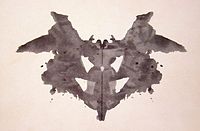
Photo from wikipedia
On the basis of long-standing proficiency testings (PTs) for the small number of PT participants p (7 ≤ p ≤ 30), laboratory bias and uncertainty were calculated by applying inter-laboratory experimental approaches. Uncertainty was… Click to show full abstract
On the basis of long-standing proficiency testings (PTs) for the small number of PT participants p (7 ≤ p ≤ 30), laboratory bias and uncertainty were calculated by applying inter-laboratory experimental approaches. Uncertainty was estimated in two ways, according to Eurolab TR No 1/2007 and Nordtest TR 537 (2012). In the case of 24 tested feed components (basic nutrients, macro- and microelements, undesirable elements and some feed additives including vitamins A and E, lysine, threonine, methionine and urea) in the large variety of feed samples, differences between the expanded uncertainties calculated according to Eurolab TR No 1/2007 and Nordtest TR 537 did not exceed 1.4 % for all tested feed and analytes in wide concentration ranges. In order to get a reliable evaluation of bias and uncertainty, minimum of 6 PT rounds and a sufficient number of laboratories participating (p ≥ 10) are recommended. When the above parameters are applied and the standard deviation of the bias sbias ≤ 5 %, the expression sbias2/n can be omitted while calculating bias. Generally, both approaches fit the purpose of feed evaluation and the calculated uncertainties can be used for compliance assessment.
Journal Title: Accreditation and Quality Assurance
Year Published: 2017
Link to full text (if available)
Share on Social Media: Sign Up to like & get
recommendations!